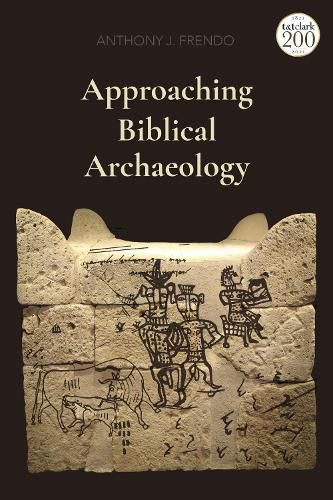Readings Newsletter
Become a Readings Member to make your shopping experience even easier.
Sign in or sign up for free!
You’re not far away from qualifying for FREE standard shipping within Australia
You’ve qualified for FREE standard shipping within Australia
The cart is loading…






Anthony J. Frendo introduces biblical students and scholars alike to the discipline of archaeology by explaining how the minds of professional archaeologists work, explaining what archaeologists seek, how they go about doing so, and how they interpret their data. Frendo shows those engaged in biblical scholarship how they can properly integrate biblical research with archaeological discoveries in a way that allows the bible and archaeology to be viewed and kept as distinct disciplines, the respective results of which, where relevant, may be integrated in productive discussion.
Frendo also examines how the archaeology of the ancient Near East (particularly that of the southern Levant) has an essential bearing on how scholars can better appreciate the text of the bible, including its religious message. Frendo examines such matters as artefacts, stratigraphy and chronology, and archaeological reasoning. He also demonstrates that, whilst generally it is archaeology that casts light on the biblical text, at points biblical interpretation can help archaeologists to understand certain data.
$9.00 standard shipping within Australia
FREE standard shipping within Australia for orders over $100.00
Express & International shipping calculated at checkout
Anthony J. Frendo introduces biblical students and scholars alike to the discipline of archaeology by explaining how the minds of professional archaeologists work, explaining what archaeologists seek, how they go about doing so, and how they interpret their data. Frendo shows those engaged in biblical scholarship how they can properly integrate biblical research with archaeological discoveries in a way that allows the bible and archaeology to be viewed and kept as distinct disciplines, the respective results of which, where relevant, may be integrated in productive discussion.
Frendo also examines how the archaeology of the ancient Near East (particularly that of the southern Levant) has an essential bearing on how scholars can better appreciate the text of the bible, including its religious message. Frendo examines such matters as artefacts, stratigraphy and chronology, and archaeological reasoning. He also demonstrates that, whilst generally it is archaeology that casts light on the biblical text, at points biblical interpretation can help archaeologists to understand certain data.